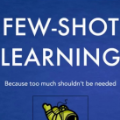Skin disease classification from images is crucial to dermatological diagnosis. However, identifying skin lesions involves a variety of aspects in terms of size, color, shape, and texture. To make matters worse, many categories only contain very few samples, posing great challenges to conventional machine learning algorithms and even human experts. Inspired by the recent success of Few-Shot Learning (FSL) in natural image classification, we propose to apply FSL to skin disease identification to address the extreme scarcity of training sample problem. However, directly applying FSL to this task does not work well in practice, and we find that the problem can be largely attributed to the incompatibility between Cross Entropy (CE) and episode training, which are both commonly used in FSL. Based on a detailed analysis, we propose the Query-Relative (QR) loss, which proves superior to CE under episode training and is closely related to recently proposed mutual information estimation. Moreover, we further strengthen the proposed QR loss with a novel adaptive hard margin strategy. Comprehensive experiments validate the effectiveness of the proposed FSL scheme and the possibility to diagnosis rare skin disease with a few labeled samples.
翻译:皮肤病从图像中分类对于皮肤病对皮肤病诊断至关重要。然而,皮肤病的识别在大小、肤色、形状和质地方面涉及许多方面。更糟糕的是,许多类别只包含很少的样本,对传统的机器学习算法甚至人类专家构成巨大挑战。由于在自然图像分类方面几乎没有热学(FSL)最近的成功,我们提议对皮肤病进行FSL识别,以解决培训样本极其缺乏的问题。然而,直接应用FSL来完成这项任务在实践中并不奏效,我们发现,问题在很大程度上可归因于CE和事件培训之间的不兼容性,而后者在FSL中通常使用。我们根据详细分析,提出“Query-Relative (QR)损失”,这证明在插图培训中优于CE(QR),与最近提出的相互信息估计密切相关。此外,我们进一步以新的适应性硬差战略加强拟议的QR损失。全面实验证实了拟议的FSL计划的有效性,以及用少数贴标签的样品诊断稀皮病的可能性。




